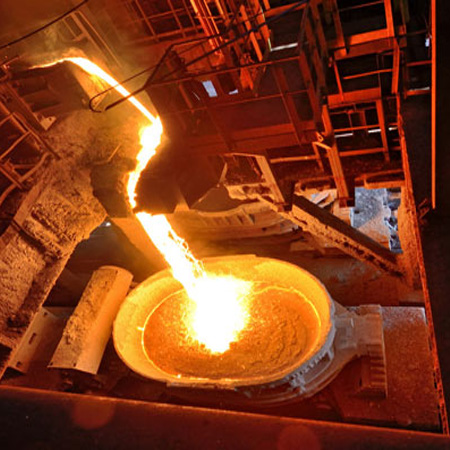Oxidative refining of silicon metal is a smelting process used to reduce the impurity content in silicon. This method is widely by Silicon Metal Manufacturers in China. In this process, silicon metal goes through high temperature and contacted with oxidant to oxidize the impurity elements. Then the oxides enter the slag phase to achieve separation from silicon metal. Compared with other refining methods, it has less pollution and is therefore more favored in certain industrial applications.
The basic principle of oxidation refining is to use the different affinities of different elements with oxygen. By controlling the supply of oxidants and reaction conditions, preferentially oxidize those impurity elements with greater affinity for oxygen. In the oxidation refining of Silicon Metal, the main redox reaction of elements such as aluminum occurs to form oxide. By adjusting the composition and temperature of the slag system, the refining effect can ensure effective removal of impurities.
Practical application of Silicon Metal Oxidative Refining
In actual industrial production, there are two regualr oxidation refining methods: air blowing oxidation refining and solvent oxidation refining. Air-blowing oxidation refiningrefers to a process in which oxygen is important to the production of metal silicon to remove impurities. This method can oxidatively refine and remove some impurities such as aluminum (Al) and calcium (Ca). Those elements have more chemical affinity with oxygen than silicon (Si), thereby improving the purity and performance of metallic silicon. Typical products include Silicon Metal 553 Oxygen and Si 553 without Oxygen.
Solvent oxidation refining uses a specific oxidant, such as soda-lime silicate glass, which can effectively remove aluminum and calcium impurities from metallic silicon. Experimental results show that the use of this oxidant can achieve a removal rate of aluminum and calcium in silicon of 93.1% and 96.4%, respectively. The aluminum content will reduce to 0.07% and the aluminum content will reduce to 0.025% in ideal refining effect.
Considerations for optimizing the oxidation refining process

When optimizing the oxidative refining process, we need to consider a variety of physical and chemical properties. Including the melting point, viscosity, and density of the slag. These properties determine the interaction between the slag and the metal, and whether the slag and the metal separate during the refining process. For example, the density of the slag system should be somewhat different from the density of the alloy so that the refined slag can float and be easily separated.
The latest research progress shows that the technology refining and purification of metallurgical grade silicon metal is constantly developing. Meanwhile, researchers want to optimizing the selection of slag systems and refining conditions to improve purification efficiency and reduce costs. Especially for difficult-to-remove elements such as boron, researchers are exploring more effective slag systems and processes to achieve the goal of low-cost production of solar-grade silicon.
In summary, the oxidation refining of metallic silicon is a complex chemical process involving thermodynamic principles and fine regulation of experimental parameters. Through continuous research and technological innovation, the efficiency of silicon refining and product quality in industrial production are expected to be further improved.
